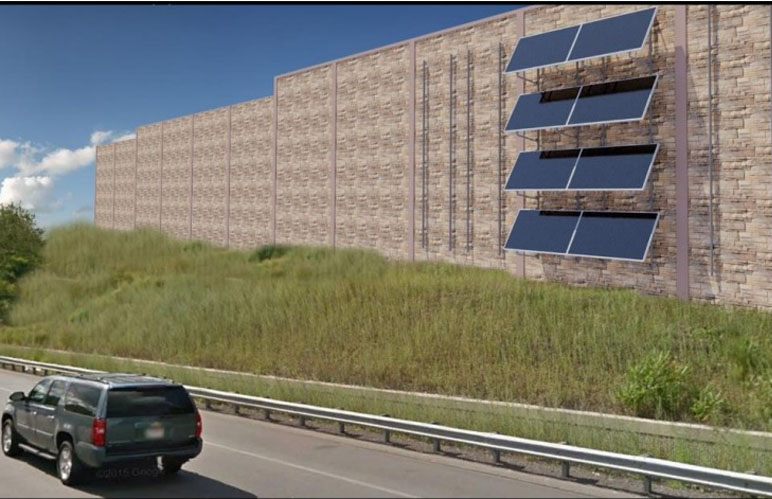Massachusetts to install solar noise barrier along highway

The 3,000 foot long by 20 foot tall solar noise barrier is expected to generate 802,000kWh annually, or the equivalent of supplying 120 homes per year with electricity.

The Massachusetts Department of Transportation (MassDOT) is launching a highway solar noise barrier project, which it says is the first of its kind in the Western Hemisphere.
In 2015, Ko-Solar and its partners approached MassDOT to discuss the concept of photovoltaic noise barriers (PVNBs). MassDOT has agreed to this pilot PVNB project along Interstate 95 in Lexington, Massachusetts. The existing noise barrier will be retrofitted into a PVNB, which will be built and financed in partnership with Solect Energy, a Massachusetts-based solar energy provider.
For procurement and contracting of the project, MassDOT will make use of its membership in PowerOptions, an energy-buying consortium in New England. Solect Energy will finance, install, monitor, and maintain the project. MassDOT plans to use the results of the pilot, including information about noise impacts, maintenance, cost, and community perception, to determine the feasibility of PVNB applications elsewhere in the Commonwealth. Progress on the project suffered some delays in part because of changing Massachusetts Solar Development Incentive Programs; SREC to SMART.
The PVNB will be on the north side of the highway, and will measure 3,000 feet long, 20 feet tall, and is constructed of reinforced concrete. The retrofit PV system capacity is expected to be 637.5kWdc, with an estimated 802,000kWh to be generated annually, or the equivalent of supplying 120 homes per year with electricity, avoiding roughly 1.4MM tons of CO2 emissions.
In partnership with Ko-Solar and its partners, MassDOT solicited input on the project from abutters and other Lexington residents through letters to those living near the project site, a public meeting, and meetings with other stakeholders, as 100% support was required to move forward. All votes were in support of the pilot project. An outcome of the public input process was to require that noise level monitoring would be part of the pilot program. Desktop noise modeling suggests there may be a slight improvement or even a reduction in noise levels for the abutters.
From: https://pv-magazine-usa.com/2022/01/26/massachusetts-to-install-solar-noise-barrier-along-highway/

